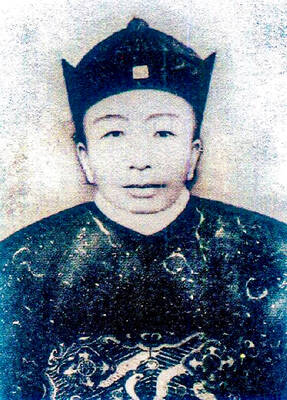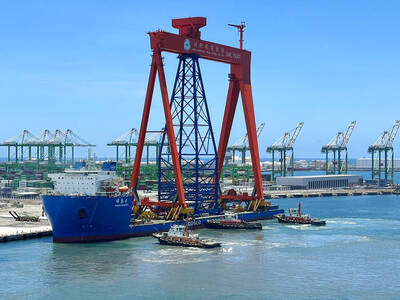In the early 1990s Bill Browder invested US$2,000 in a handful of Polish companies being privatized after the collapse of Communism. Eastern Europe was dipping a toe into the cold bath of free-market capitalism, and Browder, fresh out of Stanford University’s business school, wanted to jump in, too.
His small investment quadrupled in value within the year and went on to repay him tenfold. “For those who don’t know, the sensation of finding a ‘ten-bagger’ is the financial equivalent of smoking crack cocaine,” he writes in Red Notice: A True Story of High Finance, Murder, and One Man’s Fight for Justice. “Once you’ve done it, you want to repeat it over and over and over as many times as you can.”
Browder continued to smoke the crack pipe with gusto, shifting his action to Russia and creating a wildly successful investment fund, Hermitage Capital Management. His freewheeling, snappy book describes the meteoric rise, and disastrous fall, of a buccaneer capitalist who crossed the wrong people and paid a steep price.

The highs were very high. Browder excelled at sniffing out undervalued companies, rolling the dice and reaping fantastic returns. After determining that a little-known oil company called Sidanco was actually worth as much as Lukoil, for example, he bought about US$11 million worth of its stock at US$4 a share. The gamble was vindicated a year later when British Petroleum bought a block of the company’s stock at a 600 percent premium over that price.
Within two years after Hermitage’s founding in 1996, its assets had swelled from US$25 million to more than US$1 billion, making Browder the largest foreign investor in the Russian stock market. In 2000, Hermitage was named the best-performing emerging-markets fund in the world, having generated returns of 1,500 percent to its original investors. Its assets would grow to US$4.5 billion by 2005.
The lows, however, were very low. A hefty portion of the book describes Browder’s frantic efforts to fight off a wolf pack of oligarchs trying to muscle in on Hermitage’s action and strip its assets.
Sneaky Player
The cut and thrust, and the high stakes, make for a zesty tale. Browder and his Russian team became adept at amassing scandalous information about their foes and then presenting the findings, tied up in a neat package, to Western journalists who could inflict maximum damage.
Browder admits to a fatal miscalculation. He assumed that his US citizenship made him untouchable. In fact, he was living on borrowed time. When Vladimir Putin was intent on reining in the oligarchs, his interests and Browder’s coincided. But at a certain point, they did not.
In 2005, deemed a “threat to national security,” Browder was kicked out of Russia, and his companies were seized. Later the Russian government asked Interpol to issue an all-points bulletin, or red notice, for his arrest on tax evasion charges. Interpol rejected the request, calling it politically motivated. Browder was then convicted by a Russian court in absentia. “When the Russian government turns on you, it doesn’t do so mildly — it does so with extreme prejudice,” Browder notes ruefully.
Worse, the Interior Ministry arrested Sergei Magnitsky, Hermitage’s tax lawyer. After being held in custody for more than a year, Magnitsky was found dead on a prison floor in Moscow after being beaten and tortured.
Browder began a relentless campaign to expose and punish Magnitsky’s persecutors, turning his case into an international cause celebre. His efforts helped pressure Congress to pass a law in late 2012, commonly known as the Magnitsky Act, that barred 18 Russian officials connected with Magnitsky’s death from entering the US or using its banking system, and set a precedent for future visa sanctions and asset freezes. Last spring the European Parliament passed its own version of the act.
It’s a Hollywood ending, right down to the standing ovation given by more than 700 European members of Parliament after passing the legislation.
Browder makes an unlikely hero and even more unlikely capitalist. His grandfather was the head of the American Communist Party and featured on the cover of Time magazine in 1938 as “Comrade Earl Browder.” Felix Browder, Earl’s son, became a mathematics professor at the University of Chicago. Bill Browder’s brother, Thomas, is an eminent particle physicist. “In my family, if you weren’t a prodigy, you had no place on earth,” he writes.
Party Animal
Browder, by contrast, was a slacker. He goofed off at boarding school and barely made it into the University of Colorado, Boulder, where he spent his freshman year reliving “Animal House.”
In the ultimate act of rebellion, he set his sights on a business career, a decision that straightened him out academically and no doubt would come as a shock to his grandfather. Adding insult to injury, Browder turned his gaze eastward, toward the former Communist heartland, with plunder on his mind.
“The dominoes were falling: soon all of Eastern Europe would be free,” he writes of the tumultuous weeks after the Berlin Wall came down. “My grandfather had been the biggest Communist in America, and as I watched these events unfold, I decided that I wanted to become the biggest capitalist in Eastern Europe.”
For a while, he was. But as Magnitzky warned him, Russian stories never have happy endings.
Browder concludes on a grim note. “I have to assume that there is a very real chance that Putin or members of his regime will have me killed someday,” he writes. For good measure, he adds, “If I’m killed, you will know who did it.”
If this sounds histrionic, there is more than one dead body littering Browder’s pages. Alexander Litvinenko probably felt safe in London until he drank a cup of radioactive tea. As Browder repeatedly discovered, Russians are not known for their light touch.

The canonical shot of an East Asian city is a night skyline studded with towering apartment and office buildings, bright with neon and plastic signage, a landscape of energy and modernity. Another classic image is the same city seen from above, in which identical apartment towers march across the city, spilling out over nearby geography, like stylized soldiers colonizing new territory in a board game. Densely populated dynamic conurbations of money, technological innovation and convenience, it is hard to see the cities of East Asia as what they truly are: necropolises. Why is this? The East Asian development model, with

June 16 to June 22 The following flyer appeared on the streets of Hsinchu on June 12, 1895: “Taipei has already fallen to the Japanese barbarians, who have brought great misery to our land and people. We heard that the Japanese occupiers will tax our gardens, our houses, our bodies, and even our chickens, dogs, cows and pigs. They wear their hair wild, carve their teeth, tattoo their foreheads, wear strange clothes and speak a strange language. How can we be ruled by such people?” Posted by civilian militia leader Wu Tang-hsing (吳湯興), it was a call to arms to retake

This is a deeply unsettling period in Taiwan. Uncertainties are everywhere while everyone waits for a small army of other shoes to drop on nearly every front. During challenging times, interesting political changes can happen, yet all three major political parties are beset with scandals, strife and self-inflicted wounds. As the ruling party, the Democratic Progressive Party (DPP) is held accountable for not only the challenges to the party, but also the nation. Taiwan is geopolitically and economically under threat. Domestically, the administration is under siege by the opposition-controlled legislature and growing discontent with what opponents characterize as arrogant, autocratic

When Lisa, 20, laces into her ultra-high heels for her shift at a strip club in Ukraine’s Kharkiv, she knows that aside from dancing, she will have to comfort traumatized soldiers. Since Russia’s 2022 invasion, exhausted troops are the main clientele of the Flash Dancers club in the center of the northeastern city, just 20 kilometers from Russian forces. For some customers, it provides an “escape” from the war, said Valerya Zavatska — a 25-year-old law graduate who runs the club with her mother, an ex-dancer. But many are not there just for the show. They “want to talk about what hurts,” she